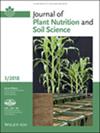Enhancing growth, quality, and metabolism of nitrogen of alfalfa (Medicago sativa L.) by high red–blue light intensity
Abstract
Background
In countries characterized by limited per capita arable land and grassland, agricultural development is hindered by insufficient forage productivity. The plant factory with artificial light (PFAL) system has emerged as a highly efficient approach to address this challenge by cultivating forage on finite land resources. In the PFAL framework, the regulation of light intensity plays a critical role in determining both the yield and quality of cultivated plants.
Aims
This study seeks to delve into the optimal range of light intensity for achieving high efficiency and quality in the production of alfalfa in the PFAL. Additionally, it seeks to explore the effects of light intensity on nitrogen metabolism, as well as the accumulation and metabolism of amino acid in alfalfa.
Methods
To achieve these objectives, alfalfa was sown and subjected to five treatments involving red and blue LED light in a 4:1 ratio. The light intensities used were 200, 300, 400, 500, and 600 µmol m–2 s−1, respectively. The alfalfa plants were then harvested at intervals of 15, 20, 25, 30, and 35 days. The quality and nitrogen metabolisms of alfalfa during this period were assessed by evaluating the plant's growth performance and determining the optimal cutting time.
Conclusion
In summary, high-light intensity (400–600 µmol m−2 s−1) improved alfalfa yield and quality, while also promoting nitrogen and amino acid metabolism. Photon flux density at 400–500 µmol m−2 s−1 light intensity for a duration of 30 days was identified as the optimal condition for PFAL alfalfa production.

 求助内容:
求助内容: 应助结果提醒方式:
应助结果提醒方式:


